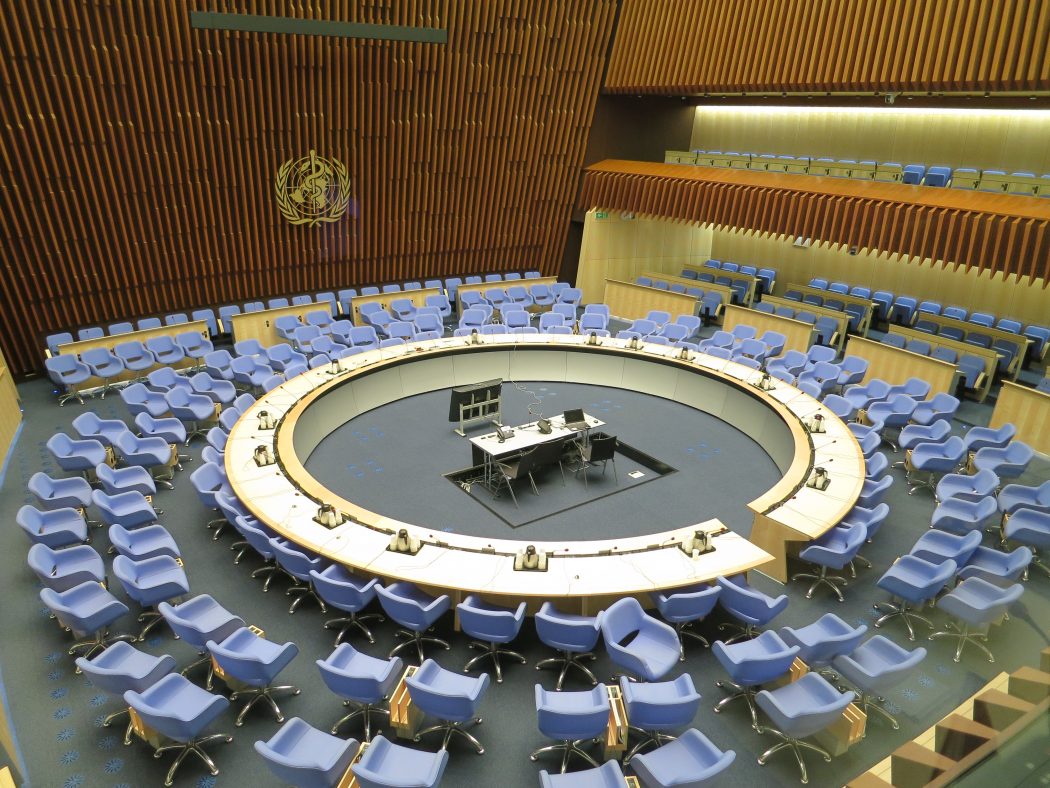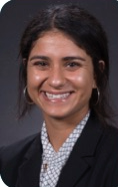Over the last few months, the COVID-19 pandemic has directed local, national, and global policies. While it has unveiled the strengths and weaknesses of our current systems, it has not shown us that a single, unilateral approach to pandemic relief exists. Every country has put into place a unique set of measures to control the spread of COVID. But, what does it mean for a disease to transcend borders? What is the World Health Organization? What is the relationship between politics, economics, and public health?
I sat down with global health expert, Dr. Heather Wipfli, to better understand COVID-19 within the context of global health, trade, and the WHO.
Heather Wipfli, Ph.D., is an Associate Professor in the Department of Preventive Medicine at the Keck School of Medicine with a joint appointment in the Department of Political Science and International Relation at the Dornsife College of Letters, Arts, and Sciences at the University of Southern California (USC). Dr. Wipfli holds a Ph.D. in International Studies from the Graduate Institute of International Studies at the University of Geneva. Her research focuses on international cooperation and governance approaches to improve health, specifically in regards to global chronic disease control including tobacco use, obesity, and exposure to air pollution, as well as adolescent-focused community-based interventions. She has conducted research in dozens of countries throughout the world and currently focuses much of her efforts in East Africa, namely Uganda. She is also a member of the California Thirdhand Smoke Research Consortium, in which she serves as the co-Director of the Thirdhand Smoke Research Center (www.thirdhandsmoke.org).
Prior to joining USC, Dr. Wipfli directed research and training for the Institute for Global Tobacco Control at the Johns Hopkins Bloomberg School of Public Health and worked on the development of the Framework Convention on Tobacco Control as a technical officer at the World Health Organization headquarters in Geneva. She has published work on global tobacco control, globalization and health, capacity building in low- and middle-income countries and health security. In 2008, Dr. Wipfli earned the Alumni Laurent Prize of the University of Geneva for her dissertation on the global diffusion of tobacco control policies, which as the basis of her first book, The Global War on Tobacco, published by Johns Hopkins University Press in 2015.
Differential: What is the role of the World Health Organization in global health? In a pandemic?
Dr. Heather Wipfli: The World Health Organization is responsible for coordinating health within the UN system. It is a member-state organization, in that the 194 countries that are members determine when and how the organization acts. Following the SARS outbreak in 2003, the WHO Member States agreed to a revised set of rules to prevent and control pandemics, known as the International Health Regulations 2005 (IHR 2005). WHO is responsible for implementing these regulations and providing countries with technical assistance before, during and after a pandemic. WHO also supports health research and provides technical support to countries, especially low- and middle-income countries. In the case of COVID-19, this is illustrated by WHO’s Solidarity Trail and launch of the Access to COVID-19 Tools Accelerator.
D: What does it take for the WHO to call a public health crisis a “pandemic”? Did WHO act too slowly in COVID?
HW: The term ‘pandemic’ is a scientific term reflecting the presence of a disease outbreak around the world. According to WHO’s agreed-upon standards, a pandemic is declared when a virus has caused sustained community-level outbreaks in at least two countries within one WHO region and one other country in another WHO region. WHO determined this was happening on March 11, 2020. However, the declaration of a ‘pandemic’ does not have any specific meaning in relation to the International Health Regulations. The highest-level official warning that WHO can make regarding an outbreak is declaring a ‘Public Health Emergency of International Concern’ (PHEIC). This declaration implies that WHO sees a serious, imminent threat to the global community and calls on all member countries to react immediately to ensure that the outbreak is prevented. WHO made this declaration on January 30, 2020 – a time at which there were only 82 cases reported in 18 countries outside China, and no COVID-19 reported deaths outside of China.
The question of whether this was ‘too late’ is difficult to discern. The Emergency Committee under the IHR 2005 did meet on January 22-23 and could not reach an agreement on whether the outbreak warranted a PHEIC declaration, delaying the eventual declaration by a week. The delay was partly due to inconclusive evidence from China around human to human transmission. It should be noted that technical staff was warning that human to human transmission was likely weeks before WHO formally acknowledged it as a scientific fact based on the official data received from Member States, including China. However, the larger issue seems to be that once WHO did make the declaration, most Member States were very slow to react and prepare according to WHO recommendations.
D: Where does WHO receive most of its funding from? What does it mean for the U.S. to withdraw funding from WHO?
HW: WHO receives funding through Member State dues (amount determined by size of economy and ability to pay) and voluntary donations to the organization from Members States, other intergovernmental organizations, foundations, and, in some cases, private companies.
The US is the single largest Member State contributor to the WHO so it will undoubtedly impact a broad range of programs. However, those programs that get large sums of earmarked funds from the US, such as polio eradication, will be especially impacted. It appears that a number of countries, including China, are stepping up to fill the funding gaps left by the US. In this case, the real consequence may be the loss of US leadership and influence at WHO and subsequently in global health.
D: What is the role of the World Trade Organization and the World Bank in a health crisis?
HW: The World Bank is focused on the economic fallout from the pandemic, helping to coordinate debt forgiveness for low-income countries and also securing financial and other resources to assist lower-income countries to manage their COVID response. The World Trade Organization is tracking how the pandemic is disrupting the global economy and world trade.
I’ll take the mention of WTO to highlight the pressing challenges related to equitable distribution of COVID-19 treatments and vaccines around the world. Right now, there is a rush to find, and eventually mass manufacture, effective drugs and vaccines. This involves the investment of billions of dollars. Traditionally the patent system, largely regulated globally through the WTO’s Trade-Related Aspects of Intellectual Property Rights agreement (TRIPs), provides the financial means to recoup these development costs. However, the current global public health crisis which is likely to require mass vaccination in countries of all income levels may be incongruent with exclusivity and monopoly pricing. While many countries and companies are in a race to patent their COVID-19 research first and build up domestic manufacturing, there are a number of initiatives being launched in an attempt to ensure more equitable access. G20 countries (except the US) and the WHO launched the Access to COVID-19 Tool Accelerator in April. AstraZeneca and Oxford University recently announced a partnership for vaccine production promising that they will not seek a profit from any future COVID-19 vaccine during the pandemic. Notably, Harvard, Stanford and MIT launched the COVID-19 Technology Access Framework and have invited other research universities to join. However, any sort of global accountability system for these various promises is missing.
D: We have countries like Sweden that have kept everything open, and countries like Singapore that are under a strict lockdown – these seem to be the extremes of handling case transmission – what do you think other countries have to learn from Sweden and Singapore? Is Sweden’s plan to achieve herd immunity as quickly as possible well-founded?
HW: This really points to the need for countries to analyze their domestic situation and find the most appropriate, evidence-based solution that works for them. There is no clear one size fits all approach. Sweden has made a decision based on the realities of their economy and society. There are undoubtedly benefits and risks with their approach. On the one hand, it appears they have more cases and their death toll is higher as compared to their neighbors. On the other hand, the longer-term economic and societal gains from their approach are not yet clear. Countries really need to consider how resilient their health system is (e.g. underlying population health status, economic equity, vulnerable populations, access to care) as well as how the population will respond to various regulatory approaches before deciding on their response.
D: It seems like the economy and public health are on 2 sides of a teeter-totter – if we want to protect the economy, we have to sacrifice public health, and if we want to protect public health, we have to sacrifice the economy – is there a way to resolve this?
HW: This is a false divide. The economy and public health are dependent on each other. If we don’t prevent pandemics, the economy will suffer (as we are experiencing dramatically in real-time). Healthy populations are also more productive and cost less. Alternatively, economic wellbeing is critical to public health. We need to think through the framework of sustainable development in which the economy, health, the environment, and human rights are all integrated.
D: What sources do you use to stay up to date on COVID?
HW: I primarily follow WHO’s updates and press briefings to hear the latest scientific consensus and get the most recent recommendations.
Tina Samsamshariat is a member of the class of 2022 at the University of Arizona College of Medicine - Phoenix. She received her Bachelor of Science from the University of California, Los Angeles and her MPH from the University of Southern California. She enjoys surfing, climbing, and rap music. Twitter: @TSamsamshariat


